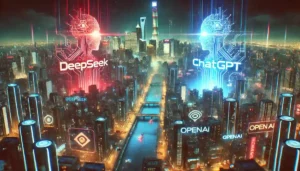Automation vs. Human Control is transforming the way we work, consume information, and make decisions. Therefore, a fundamental question arises: can AI replace human oversight? In other words, is there a limit to automation or will artificial intelligence always rely on human supervision? In our daily lives, we already make decisions influenced by AI, often without realizing it. Consequently, are we still in control, or are we merely following its suggestions? See how explainable AI, ethics, and human oversight come together for a balanced future.
Furthermore, this debate becomes even more relevant as AI becomes more sophisticated. Companies automate entire processes, virtual assistants manage routines, and even medical diagnoses are made with the aid of algorithms. However, should we delegate everything to machines?
What Does AI Do Better Than Humans? Do You Already Trust It Unknowingly?
Artificial intelligence clearly has advantages in various areas, such as:
- Large-scale data processing – While humans take hours to analyze thousands of pieces of information, AI can do it in seconds.
- Repetitive and operational tasks – AI can execute programmed actions without errors, ideal for manufacturing processes and automated customer service.
- Predictive analyses based on patterns – AI systems can identify market trends, predict machinery failures, and even detect diseases before they manifest.
Nevertheless, does this mean we can trust automation 100%? Not always. For instance, think about how many times you followed a Netflix movie recommendation, a GPS route, or accepted autocorrect without question. AI certainly makes life easier, yet are we validating its decisions?
On the other hand, if we do not question these choices, we risk getting stuck in recommendation bubbles, seeing only content that reinforces our beliefs. We might trust flawed directions or misguided predictions that affect significant decisions. Whenever we stop critically analyzing AI suggestions, we risk losing autonomy over our own choices.

The Unbeatable Role of Human Judgment
Even with all the technology, creativity, critical thinking, and ethics remain irreplaceable. Machines can deliver valuable insights, but humans must still interpret those insights and make the final decisions.
As Geoffrey Hinton, a pioneer in AI, aptly stated:
“Artificial intelligence can do a lot, but we need humans to ensure it does the right thing.”
Here are some areas where human judgment is still essential:
- Strategic decision-making – AI can suggest actions, but only humans can consider the entire context.
- Empathy and relationships – In sectors like healthcare and customer service, human interaction is indispensable.
- Subjective interpretation – Translation, design, writing, and other creative fields still rely on human intuition.
Practical Examples of AI-Human Balance
Several industries already implement an effective blend of AI and human expertise:
- Medicine: AI helps diagnose diseases, but doctors validate the results and decide on the best treatment.
- Journalism: AI systems assist in drafting news articles, while journalists refine the tone, verify facts, and perform final edits.
- Customer service: Chatbots handle simple queries, whereas human agents address more complex issues requiring empathy.
These examples show that AI does not replace humans but instead boosts efficiency when used properly. Still, are we paying enough attention to how much we delegate to AI in our daily routines?
Common Mistakes When Delegating Everything to AI
Placing blind trust in automation can bring risks. For instance:
- Algorithmic biases – AI learns from past data and may perpetuate biases without proper oversight.
- Lack of critical thinking – When we rely too heavily on AI, we might accept suggestions without questioning them.
- Security and privacy – Automating processes without human control can lead to security breaches and data leaks.
How to Find the Ideal Balance?
In order to make the most of AI’s potential without losing control, a few strategies are crucial:
- Establish automation limits – Identify which tasks can be fully automated and which require human review.
- Supervise critical decisions – In fields like healthcare, justice, and security, the human factor must be non-negotiable.
- Use AI as a copilot, not autopilot – Technology should amplify human intelligence, not replace it.
The Future of AI: Who Is Really in Control?
Ultimately, AI will likely become increasingly present in our lives, but human oversight will continue to be essential. Research from publications like Frontiers in Psychology indicates that user trust in technology is the most critical factor in AI adoption. Therefore, the more transparent and explainable AI becomes, the more effective its applications will be.
Explainable AI: How to Ensure Transparency and Trust?
Explainable AI (XAI) strives to make AI decision-making processes more understandable, allowing humans to see how and why a particular response was generated.

How Does AI Make Decisions?
Imagine you ask ChatGPT a question and receive an answer that seems wrong or confusing. You try to rephrase the question, but you still do not understand how the AI arrived at that conclusion. This happens because, often, AI models operate as black boxes, offering answers without revealing the reasoning behind them.
What Would Make AI More Transparent?
Now imagine that, in addition to the answer, ChatGPT showed you:
- Which sources it used to generate the response.
- Which patterns it followed to formulate the text.
- Which parts of the response are more reliable and based on concrete data.
Consequently, AI would become much more transparent, allowing you to validate the information before trusting it.
ChatGPT’s Progress Toward Explainability
Companies are already taking concrete steps to improve AI transparency. Instead of presenting only a final outcome, explainable AI reveals how and why a decision was made. This is vital to avoid algorithmic bias and ensure that AI decisions can be audited and understood.
- OpenAI: Developing techniques that allow its models to explain their answers and justify the criteria used.
- DeepSeek: Creating modular, open-source models for enhanced control and explainability.
- IBM Watson: Offering tools that help companies visualize how their AI systems make decisions and adjust those criteria.
Moreover, regulations are keeping pace, ensuring that AI is auditable, safe, and fair.
Conclusion: Are You Still in Control?

AI is already part of our daily lives, but human oversight remains crucial to guarantee ethical and effective use of technology. The key lies in balance: taking advantage of automation while preserving what makes us uniquely human.
Every day, you make decisions influenced by artificial intelligence—often without noticing it. Are you in control, or are you merely following the machine’s suggestions? In which cases do you believe human supervision is still indispensable? Let’s discuss!
Explore Further!
If the impact of AI on human control raises questions, there is an even deeper debate to explore: how does AI influence our quest for purpose?
If this topic intrigues you, check out the full reflection in the article: The Search for Purpose in the Age of Artificial Intelligence.
Sources








